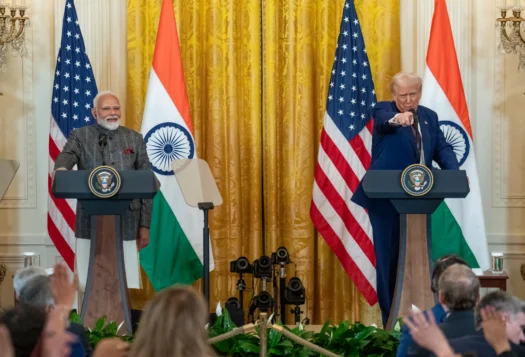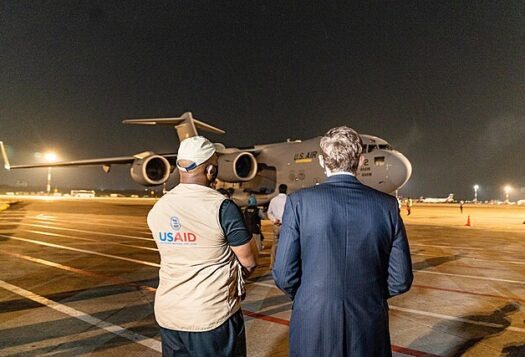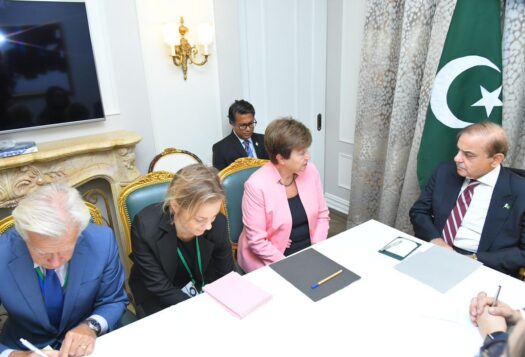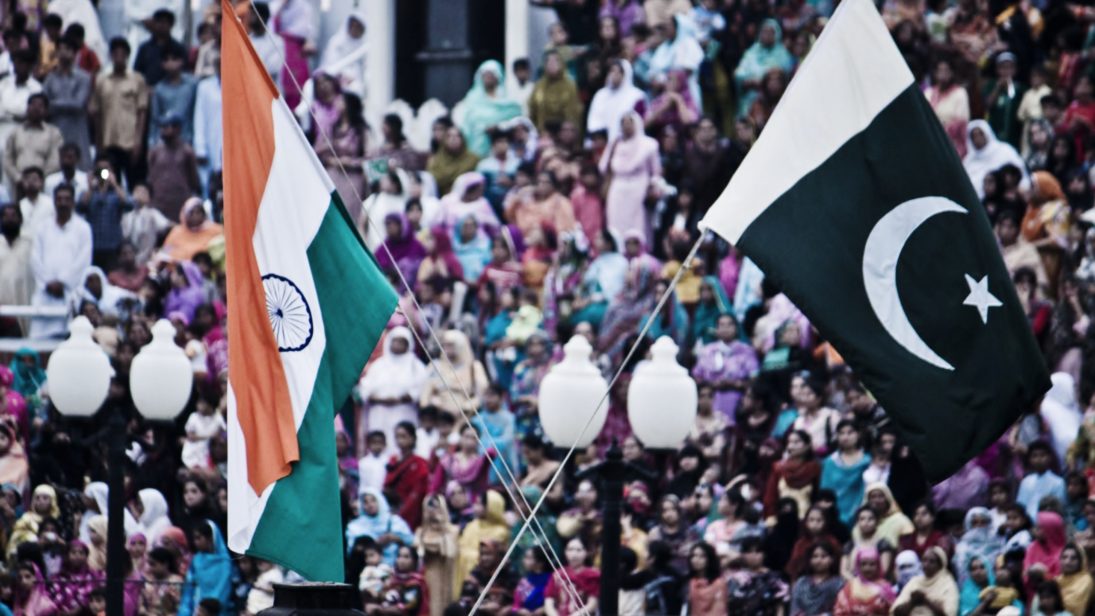
Analysis of India-Pakistan relations has been often dominated by security issues with comparatively less attention given to the untapped trade opportunities between the two countries. According to a 2018 World Bank report, India-Pakistan trade has the potential to increase from USD $2 billion to USD $37 billion if both countries were willing to take steps towards removing tariff and non-tariff barriers such as sensitive lists, strict visa policies, strict quality standards and lengthy procedures and waiting periods at the border. However, decades-old animosity and mistrust have contributed to regular setbacks and significant barriers to normalizing trade relations.
India-Pakistan Trade Dynamics and Regional Crises
Prior to August 2019, when Pakistan formally suspended trade ties with India after India revoked Jammu & Kashmir’s special status, formal trade between the two countries was estimated at USD $2 billion—with bilateral trade through formal channels tilted in favor of India. Pakistan’s exports to India include vegetable products, textiles, dry dates, rock salt, cement, leather, surgical instruments, carpets, and gypsum. While India’s exports to Pakistan consist of cotton, organic chemicals, dyes and pigments, machinery, pharmaceutical items, teas and spices, iron and steel and plastic goods. Informal trade between the two countries also takes place through smuggling via land borders or third countries, such as Thailand, the United Arab Emirates, and Singapore. From 2012-2013 informal trade between India and Pakistan was reported at USD $3.9 billion—almost double formal trade. Informal trade between the two countries further increases when formal trade is suspended.
India-Pakistan trade has the potential to increase from USD $2 billion to USD $37 billion if both countries were willing to take steps towards removing tariff and non-tariff barriers… . However, decades-old animosity and mistrust have contributed to regular setbacks and significant barriers to normalizing trade relations.
While there have been efforts by prior Indian and Pakistani governments and regional organizations such as the South Asian Association for Regional Cooperation (SAARC) to normalize trade relations, any escalation in political or security tensions puts any warming of trade relations at risk. Although SAARC was established in 1985 on the model of European Union and meant to facilitate regional cooperation, enhance trade, and encourage people-to-people contact, continued tensions between India and Pakistan and their narrow political interests have hindered any substantial regional cooperation. Multiple past SAARC summits have been held hostage to regional tensions, with the last summit being held over five years ago in Nepal in 2014. In the aftermath of the Uri attack in 2016 India boycotted the 19th SAARC summit that was scheduled to take place in Islamabad, leading to the summit’s cancellation.
Outside of SAARC, previous Indian and Pakistani governments have also tried to take steps towards normalizing bilateral trade relations. However, suspending or restricting trade has often been one of the first courses of action in the event of escalating tensions from either a terrorist attack in India or mobilization of forces on the Line of Control. For example, soon after the Pulwama attack in February 2019 India’s Prime Minister Narendra Modi withdrew the Most Favored Nation status (MFN) that was awarded to Pakistan in 1996 and imposed 200 percent custom duties on Pakistani goods—which had a significant negative impact on Pakistan’s exports to India.
The most recent shock to India-Pakistan trade has been the fallout from India’s withdrawal of Jammu & Kashmir’s special status on August 5th, and Pakistan’s retaliation on August 9, 2019 by suspending trade ties with India. It is estimated that the suspension of trade ties between the two countries is continuing to cause a monthly loss of USD $4.2 million to the bordering city of Amritsar and has affected 50,000 people in the city. Similarly, Pakistan’s exports to India were recorded at a mere USD $16.8 million during the first half of Fiscal Year 2019-2020, starting from July, while they stood at USD $213 million in the first half of 2018-19. Imports from India also fell from USD $865 million to USD $286.6 million in the same period. Consumers in Pakistan have felt the impact of the most recent trade suspension, for instance through rising vegetable costs with the price of tomatoes increasing by nearly 60 percent.
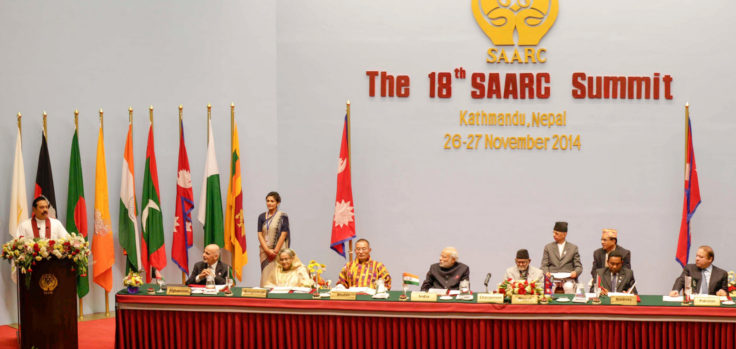
Barriers to India-Pakistan Trade
Obstacles to India and Pakistan trade consist of both tariff and non-tariff barriers including, but not limited to, strict quality standards, sensitive lists (goods on which no tariff concessions are granted), lengthy procedures and waiting periods at the border, strict visa policies, and lack of proper infrastructure such as roads, dry ports and rail cargo stations to facilitate trade. These factors combined increase both the absolute and relative costs of trade. For example, goods often must wait several days at the border check posts before they are cleared. If the goods are perishables, this means they are essentially destroyed before getting to the market.
These barriers are also aggravated by the trust deficit on both sides. For example, some in the Pakistan business community oppose free trade with India, arguing that India’s larger economy would negatively impact the demand for Pakistani goods in the domestic market compared with cheaper Indian products (considering that trade with India has historically been in favor of India). However, this argument overlooks the broader advantages of improving trade. For instance, Pakistan can import automobile parts from India at a comparatively cheaper price than importing from EU, Japan, and the UAE. This would make the Pakistani automobiles cheaper for the domestic consumers, hence increasing their sales.
The current freeze in trade relations has already impacted multiple industries. For instance, the Pakistani textile industries often import reactive dyes from India as they are less expensive. Moreover, about 31 percent of Pakistan’s cement exports go to India. Pakistan also has strengths in markets it could tap into in India, including surgical and medical equipment, along with other products. However, it is important that before liberalizing trade with India the Pakistan government consider how gains from greater trade liberalization would impact Pakistan’s local businesses. Therefore, there is a need to find out market niches in both Pakistan and India which the two countries can tap into and mutually benefit from.
Benefits of Stronger India-Pakistan Trade Relations
Enhancing economic cooperation and regional trade would leave both India and Pakistan with an opportunity to divert the enormous defense budget towards pressing issues, such as access to health services, free education, and proper housing, which are important goods for the poor populations within each country.
Beyond the economic impact, trade has the potential to act as a confidence building measure between the two countries by forming established channels of communication. As asserted by a number of international relations theorists, as countries build economic cooperation and interdependence they also significantly reduce their chances of going to war as the cost of going to war means forgoing economic benefits. The European Union in the aftermath of the first and second world wars is a compelling example of trade liberalization and regional cooperation that has stabilized a continent after years of conflict.
Enhancing economic cooperation and regional trade would leave both India and Pakistan with an opportunity to divert the enormous defense budget towards pressing issues, such as access to health services, free education, and proper housing, which are important goods for the poor populations within each country. Opening formal channels of trade would further streamline informal trade and reduce smuggling, which has the potential to lead to increased government revenue through customs duties. Similarly, Pakistan can charge transit fees by providing access to Indian goods to Afghanistan through Pakistan. Furthermore, regional trade also has the potential to create jobs and promotes economic growth and development. At a time where each country’s economy is slowing, enhancing bilateral trade can help in creating demand for their exports and help reinvigorate economic growth.
Conclusion
The populations of India and Pakistan share culture, language, and history, which can significantly help in enhancing trade, tourism, and investment between the two countries if people-to-people contact is encouraged to foster trust and greater economic interdependence. The opening of Kartarpur corridor in 2019 was a positive step in this direction, opening the door for potential economic integration by enhancing people-to-people contact—with nearly 45,000 Indian pilgrims visiting Kartarpur since its opening on November 9, 2019. Although just a first step, the Kartarpur corridor is a positive development in minimizing the trust deficit that exists between the two countries and could further contribute to other confidence building measures such as enhancing cooperation in trade. Considering that any escalation in tensions between India and Pakistan has the potential of threatening peace and stability of the region it is imperative that both countries find ways to peacefully resolve their disputes and establish new channels of communication.
***
Image 1: Jack Zalium via Flickr
Image 2: Mahinda Rajapaksa via Flickr
